Camilla Barnard creates life-sized and hand-painted Wooden Tube Station
London Design Festival 2015: artist Camilla Barnard has created a wooden and hand-painted replica of a London Underground station inside the former campus of art school Central St Martins (+ slideshow).
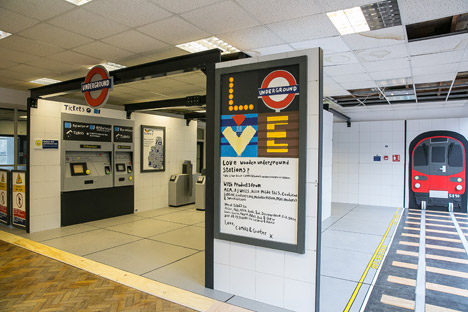
Sculptor and illustrator Camilla Barnard recreates everyday objects and iconic products in wood, ranging from the petite – a Bialetti moka coffee pot and Kellogg's cereal boxes – to the scale replica of a tube station.
Wooden Tube Station was created for this year's designjunction exhibition in London, which has moved into the former art school campus in Holborn, in the central area of the city.
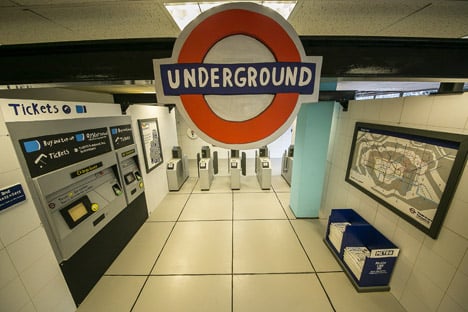
The set-like installation, made entirely from hand-illustrated sheets of timber, was designed over a period of three months at Barnard's studio in east London.
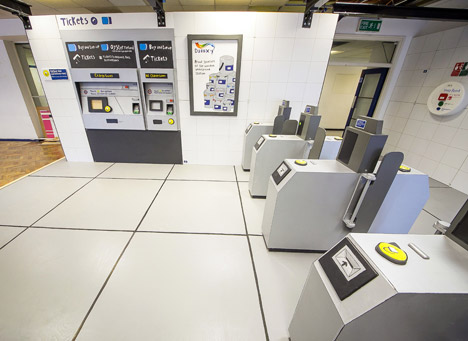
The artist collaborated with woodworker Gunter Luck on the project, meticulously measuring the dimensions of barriers, ticket machines and tiles in London Underground stations to create accurate scale models for the installation.
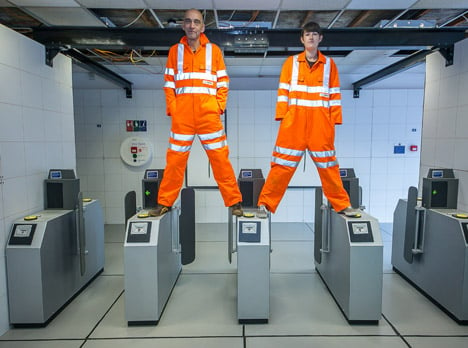
Barnard and Luck wore florescent orange boiler suits for the opening of the installation as a nod to the workwear of Underground engineers.
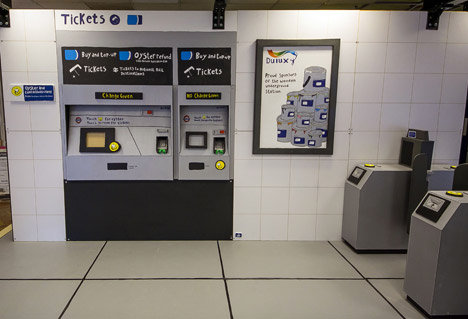
"I want to try to replicate as many things as I can, so a Tube station is quite a big iconic one to tick off the list," Barnard told Dezeen at the opening of the installation.
"I started doing it at university and people started to really engage with it and love it so it escalated into a career," she said. "People keep asking me to make stuff and I enjoy doing it, keeping copying."
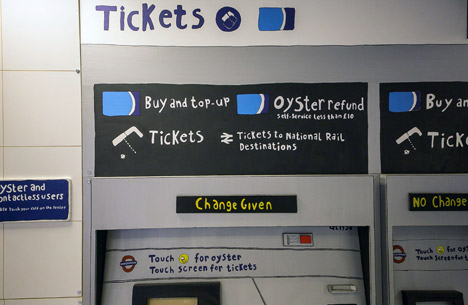
Barnard hand-painted the Tube maps, stacks of Metro newspapers with spoof headlines and signage within the installation.
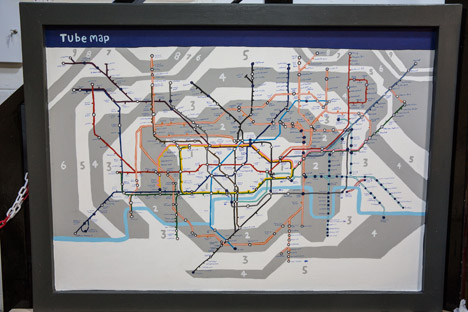
While the dimensions of each object are intended to accurately reflect the proportions of a real station,"wibbly-wobbly" painted and drawn outlines give the piece a handmade and illustrative appearance.
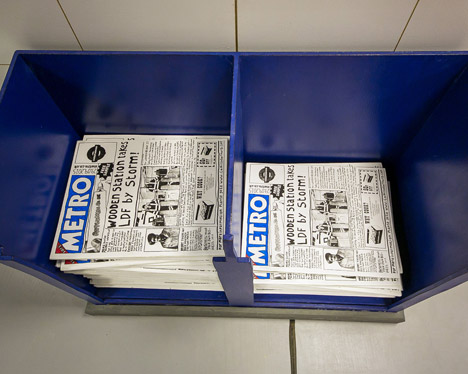
"I'm not the most accurate person, I don't think I could make something exactly copied – it looks like a 3D illustration really," she said. "It's got all the measurements and details but then I freehand a bit as well."
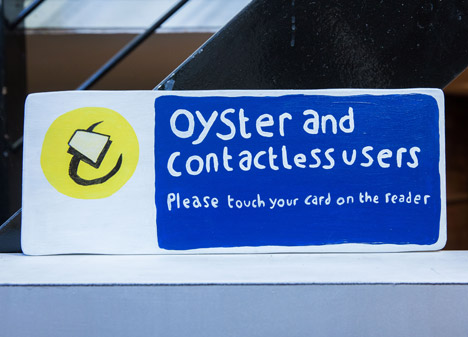
The installation is sponsored by Dulux, and the paint brand is referenced in advertisements on the mock tiles that form the station's walls. Barnard carried around swatches from the paint brand for the duration of the design process to help match the colour of elements used in real stations.
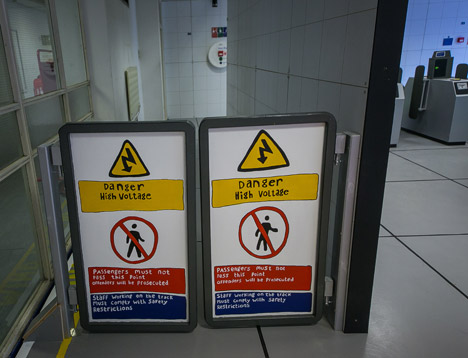
"Every time I had to go somewhere I had my tape measure and my camera," she said, "and Dulux sponsored it so I had a load of Dulux swatches that I had to match up."
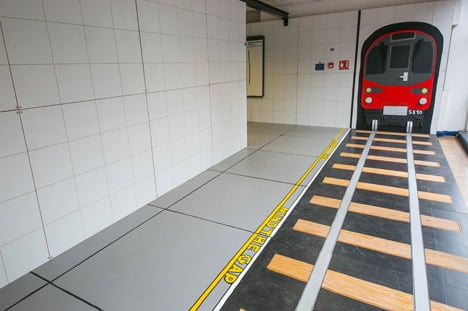
The names of the team who helped construct the installation are credited on the eastbound and westbound signage behind the ticket barriers, while small tablet screens inserted in the front of the ticket machines shows a video of the installation process.
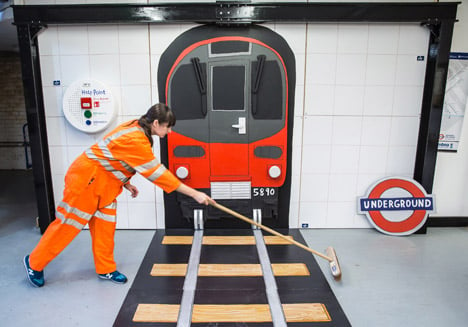
Hand-written posters detail the names of the designers included in an exhibition of products from Transport for London (TfL) – the organisation responsible for managing the London underground and bus networks – to one side of the installation.
Among the newly licensed TfL products are textiles by Michelle Mason for Swoon Editions, furniture by designjunction director Michael Sodeau and an updated version of the classic 1940s Coolicon lampshade by Trent Jennings.
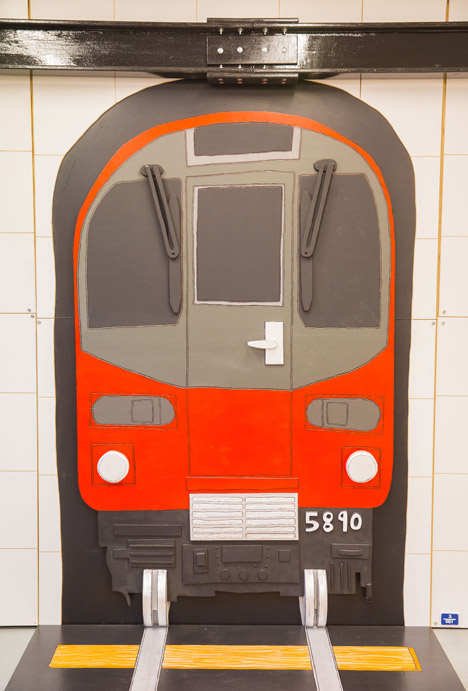
"The wooden station is kind of a stage to present stuff as well as being a strange installation you can explore," said Barnard.
The installation, which is positioned at one end of a Transport for London-themed cafe at designjunction, marks the beginning of an 18-month programme of events, exhibitions and competitions celebrating London Underground's 150th birthday.

Architecture firm NBBJ recently unveiled a conceptual plan to turn the Tube's Circle Line tunnel into a 17-mile-long moving walkway to honour of the 150th anniversary, while earlier this year Gensler shared plans to repurpose abandoned tube tunnels as a subterranean cycle path.
A fleet of driverless trains designed by London studio Priestmangoode are due to be rolled out across four lines as part of the Tube network's ongoing upgrading works by 2020.
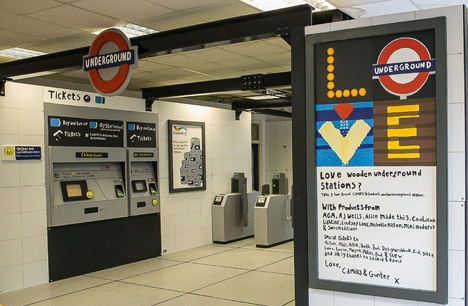
Barnard, who graduated from University of Brighton's undergraduate Materials Practice course in 2011, has also recreated the crown jewels in wood for the annual Designersblock exhibition, which is being held at the Bargehouse in London until 27 September 2015.
Last year, designer Lucy Sparrow recreated over 400 typical convenience store products from felt and exhibited them in an east London corner shop for a temporary installation.
Wooden Tube Station will be on show at the former building of Central Saint Martins until 27 September as part of this year's London Design Festival.
Photography is by Jeff Moore.